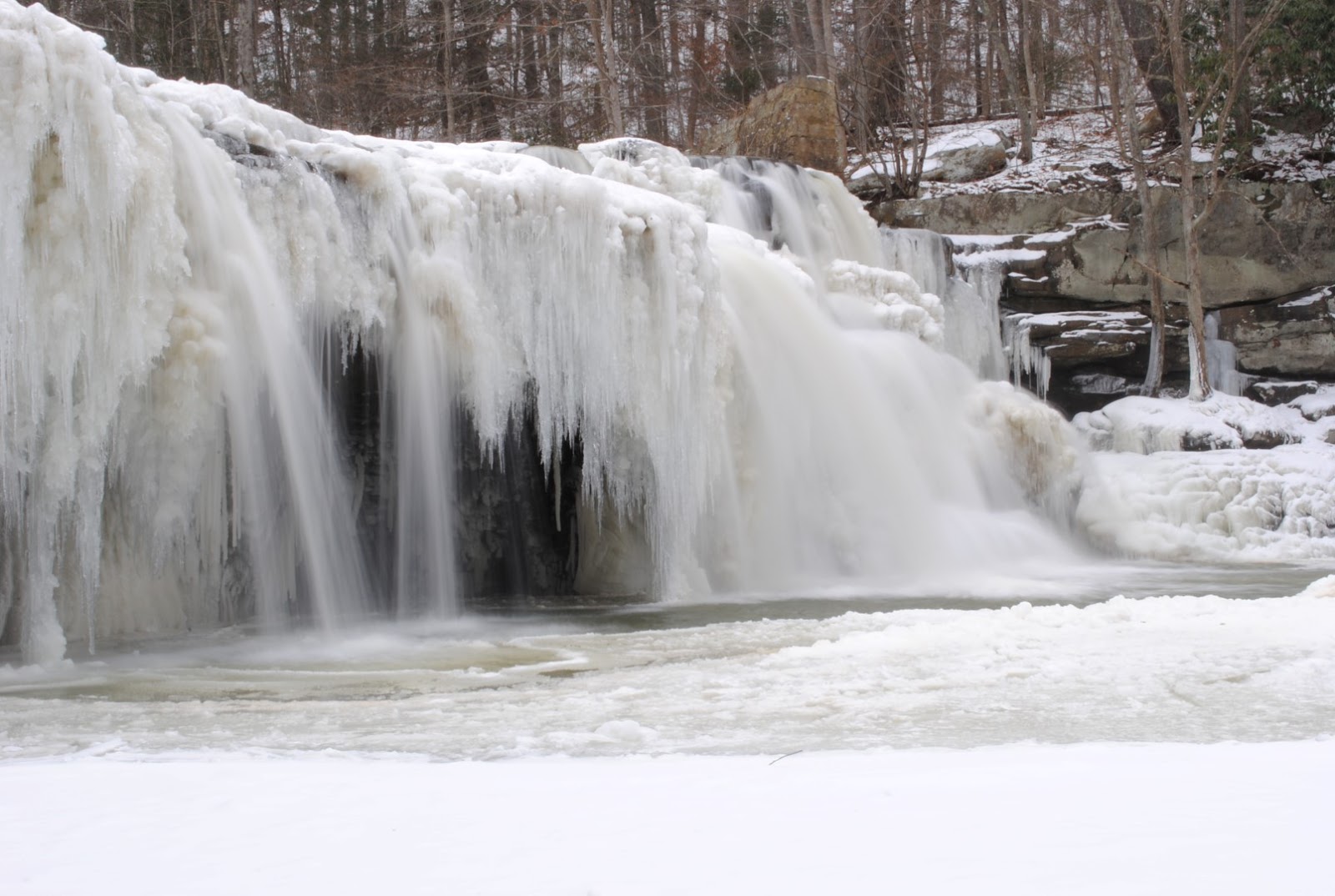1. To see how much of Southern West Virginia largest waterfall was frozen after a week of bitter cold.
2. To locate the globally rare shrub Canby’s mountain-lover. It is evergreen and I am hoping to locate it
while it is winter so that I can find it easier when it blooms.
The waterfall was about 75% frozen, I have seen it almost totally froze a few years ago.
There were several smaller falls along the trail that were interesting as well.
 |
| Brush Creek Falls |
The rest of the hike was just enjoying the day and keeping my eyes open for the Canby's. I saw several evergreen plants including this one. With help by Jim from "Jims Blog" it is identified as Tsuga canadensis or Canada hemlock. Jim is a great photographer of wildflowers and you can find his blog here or linked in the 'My Blogs List' to the right. I never found the Canby's so it seems that this summer I will be trekking into the hills and hollers of the Brush Creek Preserve rather than just on the path.
 |
| Canada hemlock |
 |
| Putty-Root Orchid |



.jpg)
.jpg)



